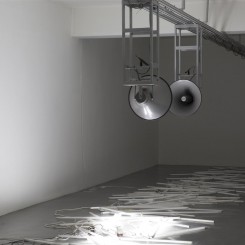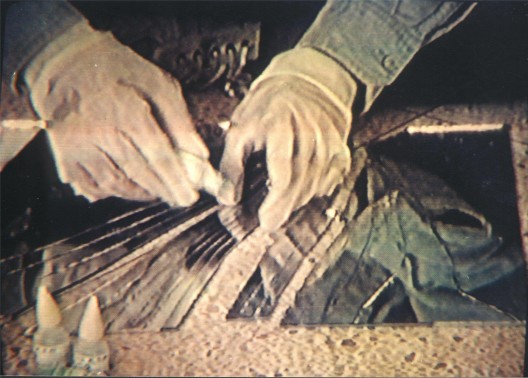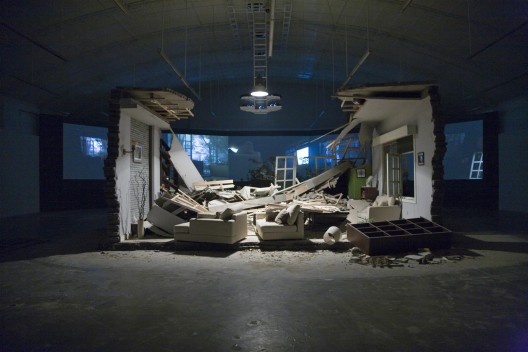These generalized descriptions of the 1980s and today tell us more about China’s larger ideological backdrop than the artists working within it. Artists in the 1980s who were reading philosophy and making artworks to change the world were possibly no different from the artists working today and making art for fame and fortune. If the forces of social conformity dictate that it is cool to be idealistic, few people will operate outside that paradigm. Then if the paradigm shifts and most artists shift with it, what does that tell us about the situation in general? It makes sense, therefore, to conclude that the idealism of the ’85 New Wave was produced by the ideology artists were operating within, rather than the artists themselves. This cannot be a polemical or extreme opinion, as China’s past one hundred years have been characterized by violent ideological swings that have required all of its population to change en mass, practically overnight. To be idealistic when everyone else is being idealistic cannot be meaningful in itself. What may be a better gauge is to ask which artists have been consistent in their attitude towards art and their own artistic practice, regardless of the seismic changes happening around them.
Here, the practice of Zhang Peili immediately comes to mind. He began his thirty-year artistic career during the ’85 New Wave, joining with artist Geng Jianyi in creating the Hangzhou based Pool Society in 1986, producing China’s first purely text-based artwork “Procedure of “Ask First Shoot Later”: About “X?”” in 1987, and making China’s first work of video art in 1988. His attitude towards art may be illustrated succinctly by the story behind this seminal video work, “30 x 30.” The medium of video was only part of its inception, as the work was actually meant to be a prank played on the attendees of the Huangshan Meeting of 1988, a conference of contemporary art practitioners at China’s art-historically significant mountain in Anhui Province. Zhang Peili’s original intention was to secretly lock all the delegates in a room while they watched his video, which consisted of a mirror being broken to pieces and glued back together again and again for three hours. The absolute tedium of the work would be contrasted with the insanity it provoked by those forced to watch it.
In reality, Zhang didn’t go through with his plan to lock the door, and after twenty minutes of showing his work was asked by delegates to fast forward through the rest of the tape. While the different groups, styles, and factions within the ’85 New Wave varied in content and intention, humour was not in abundance. Seriousness was proof of earnestness, and earnestness was an indication of lofty intentions. “30 x 30″ fused black humour with conceptual rigor, and brought action, documentation, situation, and an understanding of the medium of video together to make an exquisitely complex and nuanced work that simply flew over the heads of those in the room with him. Therefore, video art in China, like that in the West, started as a reaction to the “art establishment”. Of course, the art establishment in question was itself a small anti-establishment group of avant-garde artists and critics, but it had already been imbued with an aura of authority as the selection committee for the China/Avant-Garde show being planned for the following year at the China Art Gallery[1]–in other words, as representatives of the avant-garde itself. This work perhaps represents better than any other Zhang Peili’s sense of irreverence towards power in all its manifestations–especially when it is related to art.
Fast forward to twenty years later, and Zhang Peili has come to be known as the “Father of Chinese video art”. During these years, Zhang had put together a solid and important body of video art that has been extensively researched and written on, and does not need to be covered again here. However, just as the passionate idealism of the 1980s did not deter him from taking a fiercely independent path, the giddy materialism of the past ten years has not affected him either. What did have an impact on Zhang’s work were the technology available to play with and increased financial resources with which to make new work. This resulted in all kinds of experiments combining technology, installation, and video–each with varying degrees of success. While video was the underlying component for earlier work, installation became more and more important as time went by. The ratio between video and installation tipped in favour of installation with two massive works of 2008: “Gust of Wind“, showing the destroyed physical remains of a large and comfortable living room with a five channel video showing the process of its destruction by the eponymous wind, and “Mute”, for which he moved an entire clothing factory into an exhibition hall while screening a video of it still in use. This was followed by “Live Report: Hard Evidence No. 1″ (2009), which consisted of the burnt out shell of a car with screens around it showing live images from sixty pinhole cameras installed within its husk. Then, in “Standard Routine II: Ocular Gymnastics”(2011), video is reduced to a minimum, and the main focus of the installation is given to school uniforms mechanically moving up and down on top of TV monitors. Here, Zhang Peili’s imagination seems to be caught by the potential of mechanical motion more than video. With each work, installation replaces video more and more until “A Necessary Cube” (2011) cuts out video altogether, leaving only a mechanically expanding silver air sack.

张培力,《阵风》, 5视频源/5画面录像投影装置(PAL 格式)、搭景拍摄(被毁损)后保留下来的物品,无声/ 彩色,13分14秒,2008 。Zhang Peili, “A Gust of Wind”, mixed media installation, dimensions variable, 2008.
After over twenty years of making video, Zhang Peili had himself become a figure of authority without meaning to. His inherent distrust of the status bestowed upon him by Chinese art history became a driving force for constant experimentation, insuring against his own ossification. Having climbed into the world of video art in 1988, he seems by 2011 to have climbed out the other side. Although he has still been making video-based work since, his most accomplished work has successfully left video out of the equation altogether. Still enamoured by the potential of mechanical movement, Zhang Peili made two works in 2014 that deserve particular attention. The first was an installation in his solo show at Boers-Li Gallery “Because…Therefore” entitled “Collision of Harmonies” that featured two megaphones hanging from a rail, converging on each other slowly while playing a romantic male/female wordless harmony. A long pile of neon tubes placed directly underneath the speakers light up and extinguish in response to the speakers’ movements. As the speakers and their melodic duet get closer to each other, audio feedback develops that grows to a constant, ear-splitting shriek when the speakers meet each other face to face, at which point all the neon tubes illuminate simultaneously, flooding the exhibition room in bright white light.
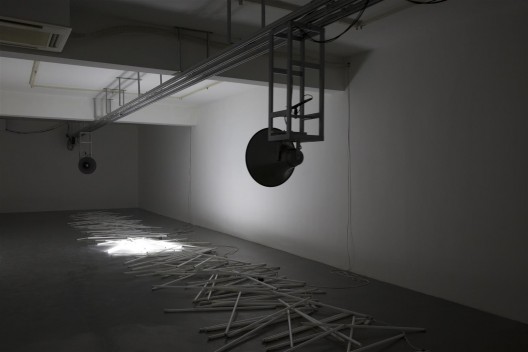
张培力,《碰撞的和声》, 声音装置,轨道, 喇叭,电脑,日光灯管, 2014 。Zhang Peili, “Collision of Harmonies”, sound installation, track, speakers, computer, fluorescent light tubes, 2014.
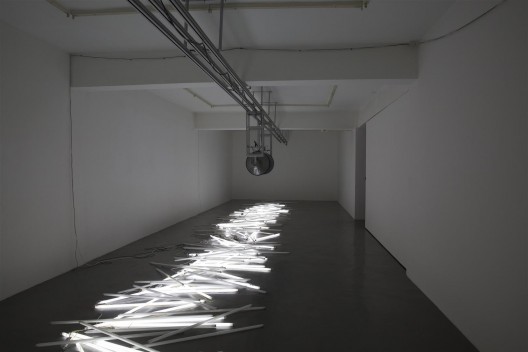
张培力,《碰撞的和声》, 声音装置,轨道, 喇叭,电脑,日光灯管, 2014 。Zhang Peili, “Collision of Harmonies”, sound installation, track, speakers, computer, fluorescent light tubes, 2014.
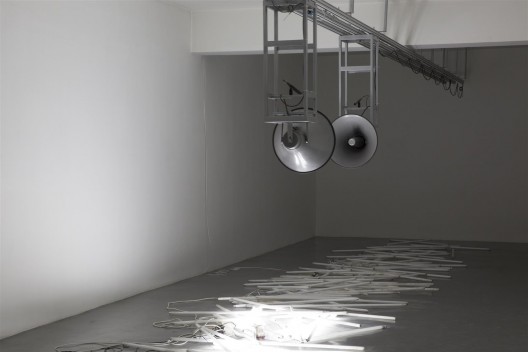
张培力,《碰撞的和声》, 声音装置,轨道, 喇叭,电脑,日光灯管, 2014 。Zhang Peili, “Collision of Harmonies”, sound installation, track, speakers, computer, fluorescent light tubes, 2014.
The second work in question was an installation exhibited in Boers-Li’s booth at the West Bund Art Fair titled “Solemn Circle.” This consisted of a four metre high pillar on a circular base with a large white flag protruding from it. The horizontal pole with its hanging flag circles around the central axis pillar whilst slowly moving up and down, tracing a spiral trajectory. The length of the flag is designed so that it is constantly dragged along the ground, almost in its entirety at the lowest point.
Similar to the attitude that led to his conception of “30 x 30″, something has once again provoked Zhang Peili’s sense of the absurd and irreverent. In “Collision of Harmonies”, a harmony is created by one voice issuing forth from each speaker in the installation–one a man’s voice, and the other a woman’s. They sing the same melody but in a different pitch, creating a pleasing harmony between them. So far, so good. After all, Chinese state-sanctioned cultural content has to conform to the government’s “Main Melody”, which is the policy and ideology the state wants to promote at any given time. However, this idea of melody has to be given an underlying structure in order to make sense. After all, how does the Chinese Communist Party government justify the egalitarian ideals of communism with the extreme social stratification created by its capitalist economic policy? Hu Jintao’s slogan “Harmonious Society” is the perfect vehicle for such political alchemy, marrying the Confucian ideal of harmonious social hierarchy (in which everyone knows their place) with today’s stark social reality. Harmony is created, therefore, by adhering to one’s allotted melody. The harmony in Zhang Peili’s installation, however, is created by two megaphones. For non-Chinese, this type of speaker will be familiar from old war films, making announcements in prison camps or army barracks. For Chinese people, they will be familiar from personal experience, as they are used in all schools, universities, and work units to make announcements and play music. They are a symbol of control, but also of nostalgia. In the schoolyard and university campus they bring people together. But during political movements they were used for public denouncements. No matter how they are used, megaphones are a symbol of authority, and the sound that emanates from them comes from authority. The melody here, therefore, can only be the Main Melody, and the harmony created is contingent upon strict parameters. Zhang simulates these simple parameters by making the speakers move along one single path in which harmony can only be tested through proximity. Zhang’s dark sense of humour rears its head once again, as he knows that the closer the speakers are together, the more the audio feedback will increase until it destroys the harmony with screeching. (Feedback is created by a looped signal in which what goes in comes out ad infinitum, once more analogous to the idea of repeating endlessly what is heard). Harmony is destroyed upon proximity, but proximity is the only test of harmony.
“Solemn Circle” is similarly ideologically astringent. A white flag being dragged along the ground around a central pillar is hardly an empty gesture. The white flag of surrender is usually hung out plainly and simply for a victorious enemy to see. However, just as apologizing too strenuously denotes a lack of sincerity, this overt and ceremonial gesture of surrender has to be looked upon with suspicion. The eternal spiral movement designates constant and eternal surrender. Who can the artist be surrendering to, and why? Is it a coincidence that this act of surrender has taken place in an art fair? Or perhaps the white flag is not a symbol of surrender, but a symbol of neutrality. A flag without any symbolic designation can only mean any flag, symbolizing any entity represented by a flag. But what kind of entity needs a flag to be represented? The answer: authority. Looking at “Solemn Circle” from this perspective, it seems Zhang Peili is dragging all flags and everything they represent along the ground; but he is doing it ceremoniously and with much formal beauty, and he is doing it forever.
While Zhang Peili’s video work has generally avoided aesthetic formal language as a continuation of his earliest attitudes, the strong formal qualities of these two works represent a definite break from his past practice. Most artists at his age seek to solidify their formal language and art historical status, but Zhang’s disdain of status and authority is subverting that very notion.
The reinvention of his own practice after 30 years in the field shows that Zhang Peili has lost none of the uncompromising attitude that created “30 x 30.” While this spirit was forged in the ’85 New Wave, he did not believe in that system of thought any more than he believes in today’s. It is apparent when looking at his recent work that the only thing Zhang needs to believe in is art itself. But in China’s constantly shifting ideological ground, that is easier said than done.

张培力,《庄严的圆》,机械雕塑,400(高) x 300(半径)cm,尺寸可变,2014 。Zhang Peili, “The Solemn Circle”, kinetic sculpture, 400 x 300 cm, 2014.
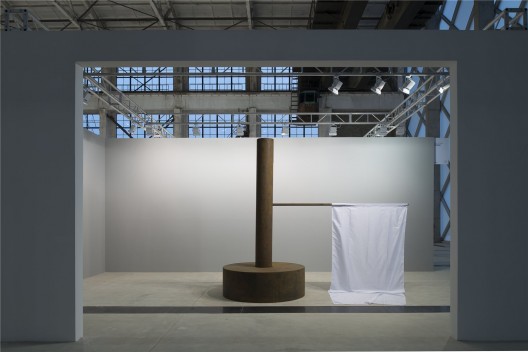
张培力,《庄严的圆》,机械雕塑,400(高) x 300(半径)cm,尺寸可变,2014 。Zhang Peili, “The Solemn Circle”, kinetic sculpture, 400 x 300 cm, 2014.
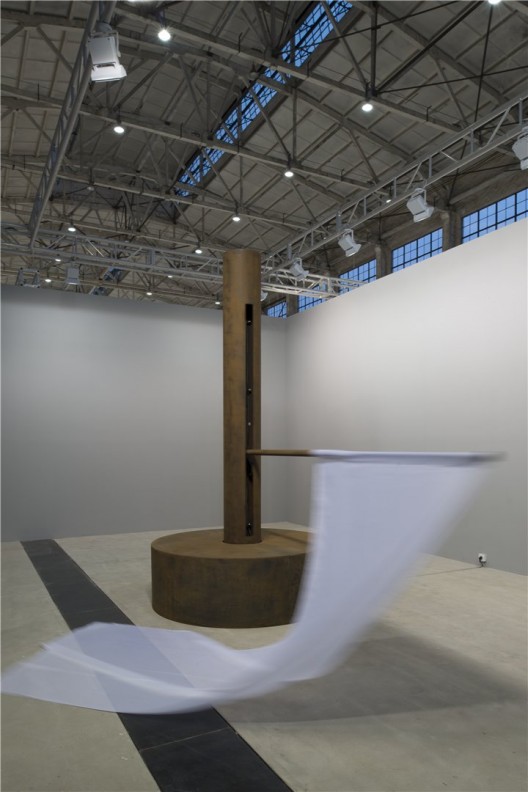
张培力,《庄严的圆》,机械雕塑,400(高) x 300(半径)cm,尺寸可变,2014 。Zhang Peili, “The Solemn Circle”, kinetic sculpture, 400 x 300 cm, 2014.
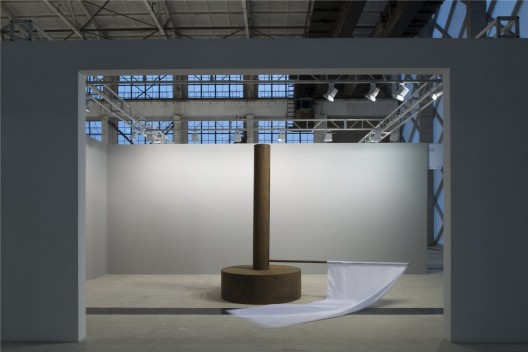
张培力,《庄严的圆》,机械雕塑,400(高) x 300(半径)cm,尺寸可变,2014 。Zhang Peili, “The Solemn Circle”, kinetic sculpture, 400 x 300 cm, 2014.
[1] Now known as the National Art Museum of China (NAMOC)

